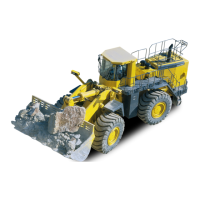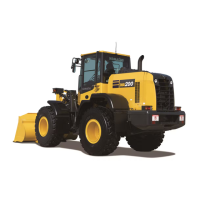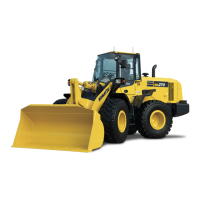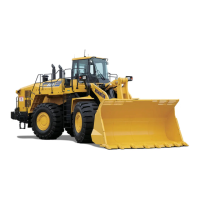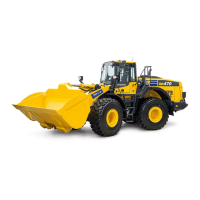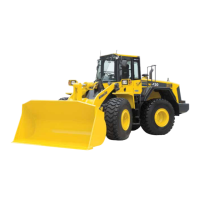DRIVING
5-20
REVERSE DRIVING
The machine can drive forward or backwards (reversing) at the
same speed. Before driving backwards, pay particularly care,
that nobody is in your way. If necessary, rely on another person
for aid. Sound the horn before starting to drive to make sure, that
anybody who might be in your way is appropriately warned.
While driving backwards, turn your head into the driving direc-
tion. It is not sufficient to rely on the rear view mirrors.
TURNING
• The machine may fall over if you turn abruptly at a high
speed!
If the engine is stopped during operation, does it affect
braking and the servo-assisted steering will be deactivat-
ed. You may then only steer the machine with consider-
ably higher effort.
TURNING ON SLOPES, EMBANKMENTS OR HILL
FLANKS
Keep sufficient distance to ridges and steep slopes. There is
danger of the machine tipping over or sliding down on steep
slopes, embankments, or hill flanks. The limit values are defined
in chapter "Limit Values for Slopes".
Do not turn on a slope or drive across a slope. Turn or cross the
section only level ground. When driving on slopes, avoid driving
on grass, fallen leaves, or steel plates. Driving sideways on
these surface types may result in the machine sliding. For this
reason, drive very slowly and carefully.
To keep the centre of gravity as low as possible when driving on
slopes, embankments, and hill flanks, you must set the bucket to
a position just above the ground (approx. 7.87 in (200 mm) to
11.8 in (300 mm)). In the event of an emergency, lower the buck-
et on the ground in order to stabilise the machine.
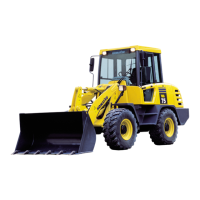
